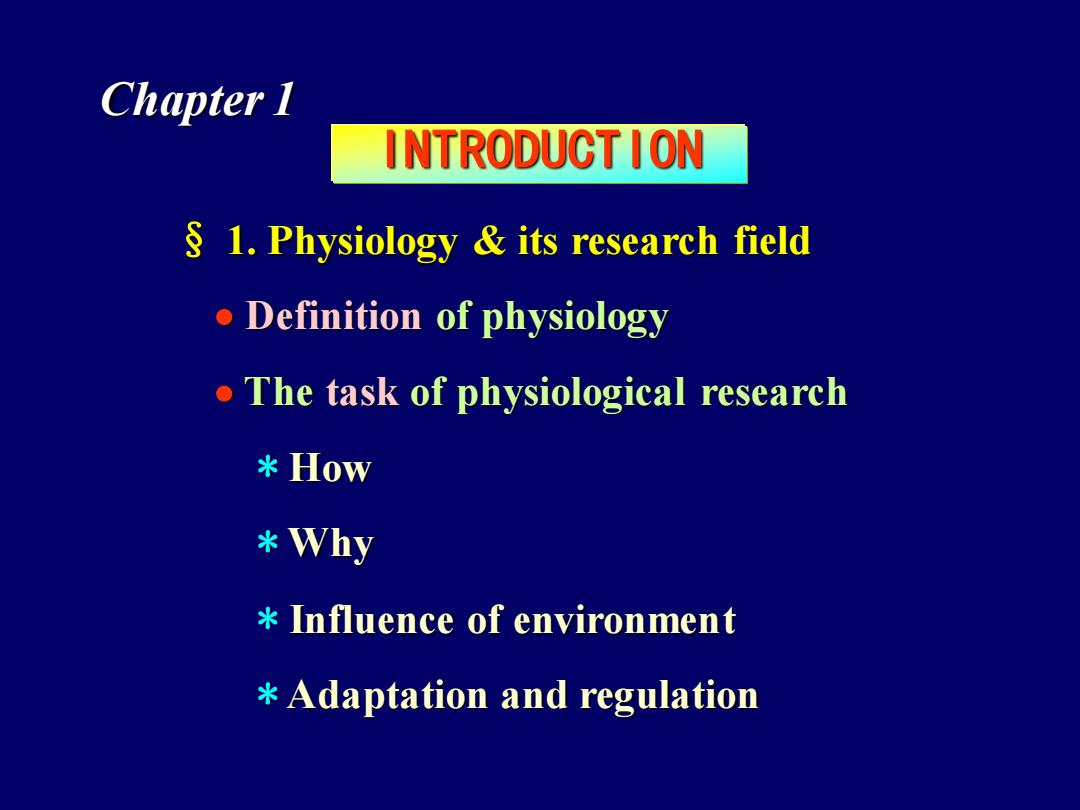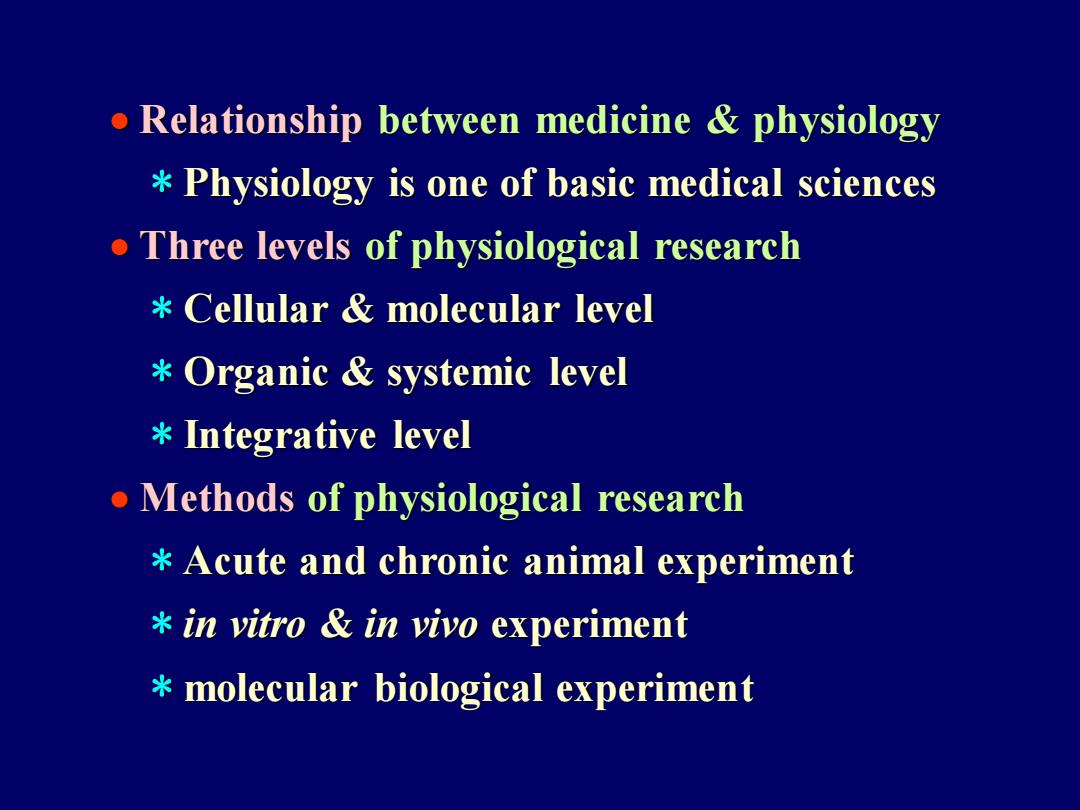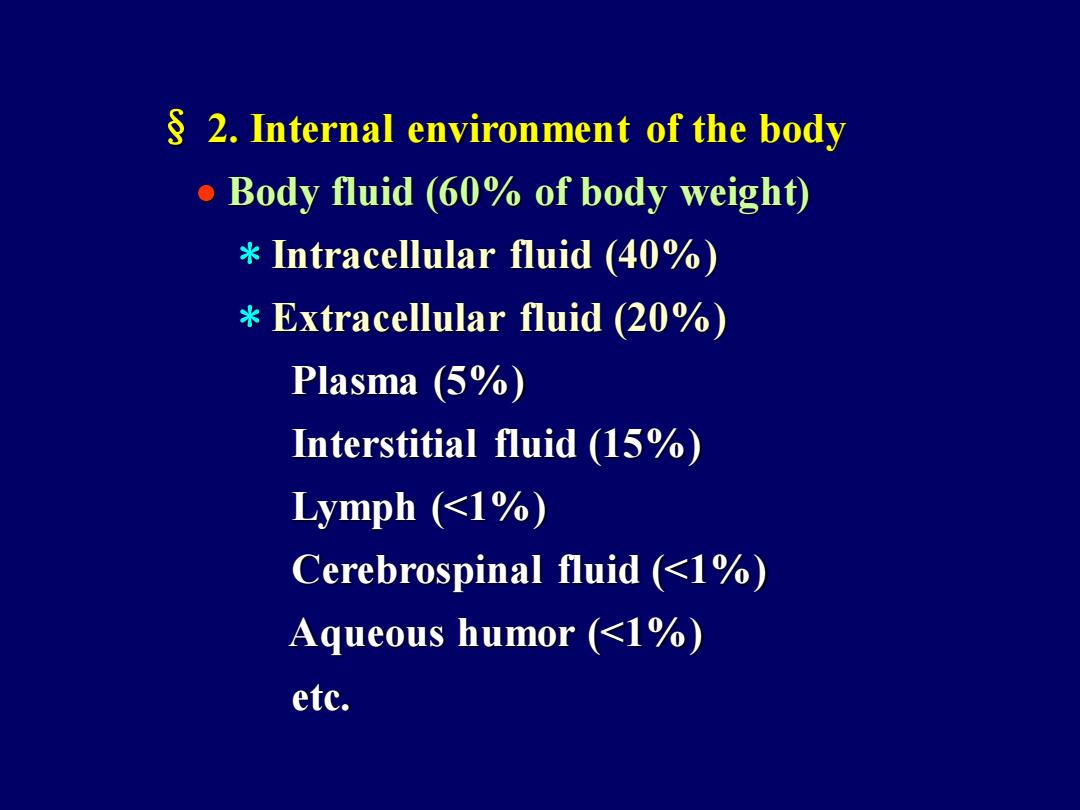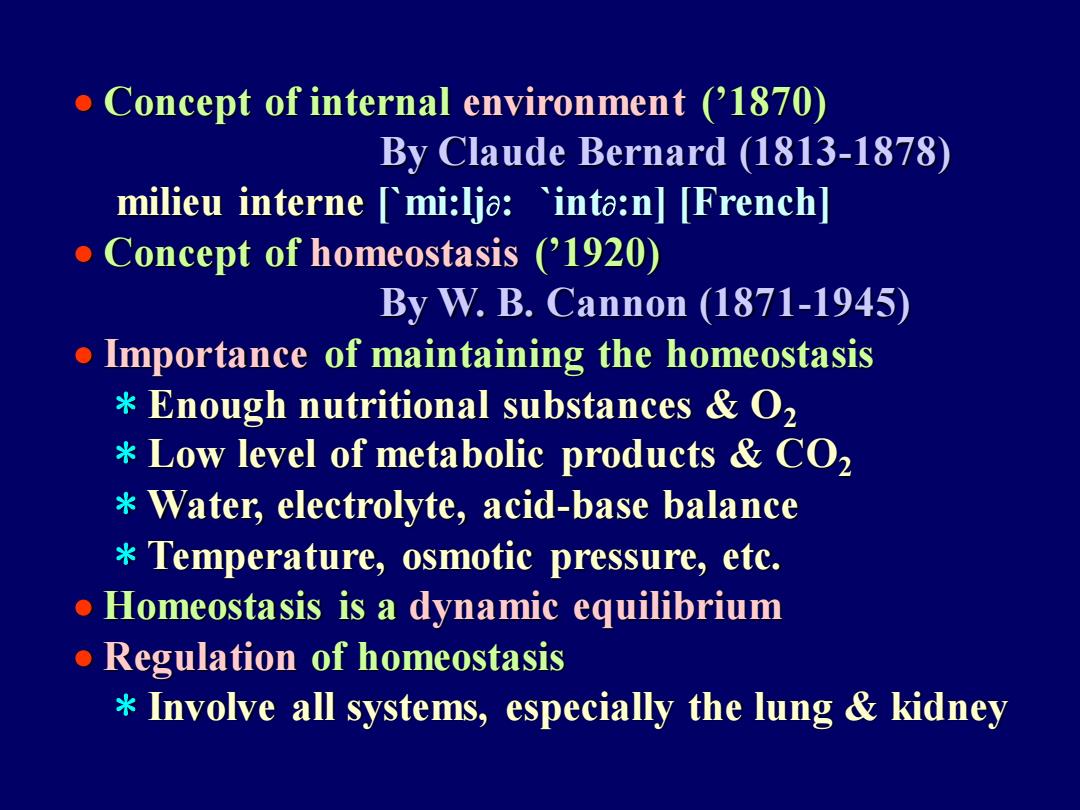
Chapter 1 INTRODUCT ION 1.Physiology its research field Definition of physiology The task of physiological research *How *Why Influence of environment Adaptation and regulation
Chapter 1 § 1. Physiology & its research field • Definition of physiology • The task of physiological research * How * Why * Influence of environment * Adaptation and regulation INTRODUCTION

Relationship between medicine physiology Physiology is one of basic medical sciences Three levels of physiological research Cellular molecular level Organic systemic level Integrative level Methods of physiological research Acute and chronic animal experiment in vitro in vivo experiment molecular biological experiment
• Relationship between medicine & physiology * Physiology is one of basic medical sciences • Three levels of physiological research * Cellular & molecular level * Organic & systemic level * Integrative level • Methods of physiological research * Acute and chronic animal experiment * in vitro & in vivo experiment * molecular biological experiment

2.Internal environment of the body Body fluid (60%of body weight) Intracellular fluid (40%) Extracellular fluid (20%) Plasma (5%) Interstitial fluid (15%) Lymph (<1%) Cerebrospinal fluid (<1%) Aqueous humor (<1%) etc
§ 2. Internal environment of the body • Body fluid (60% of body weight) * Intracellular fluid (40%) * Extracellular fluid (20%) Plasma (5%) Interstitial fluid (15%) Lymph (<1%) Cerebrospinal fluid (<1%) Aqueous humor (<1%) etc

(占体重的40%) 人体外 Distribution transfusion of body fluid
Distribution & transfusion of body fluid

Concept of internal environment ('1870) By Claude Bernard (1813-1878) milieu interne [mi:ljo:into:n]French Concept of homeostasis ('1920) By W.B.Cannon (1871-1945) Importance of maintaining the homeostasis Enough nutritional substances O2 Low level of metabolic products CO2 Water,electrolyte,acid-base balance Temperature,osmotic pressure,etc. Homeostasis is a dynamic equilibrium Regulation of homeostasis Involve all systems,especially the lung kidney
• Concept of internal environment (’1870) By Claude Bernard (1813-1878) milieu interne [`mi:lj: `int:n] [French] • Concept of homeostasis (’1920) By W. B. Cannon (1871-1945) • Importance of maintaining the homeostasis * Enough nutritional substances & O2 * Low level of metabolic products & CO2 * Water, electrolyte, acid-base balance * Temperature, osmotic pressure, etc. • Homeostasis is a dynamic equilibrium • Regulation of homeostasis * Involve all systems, especially the lung & kidney